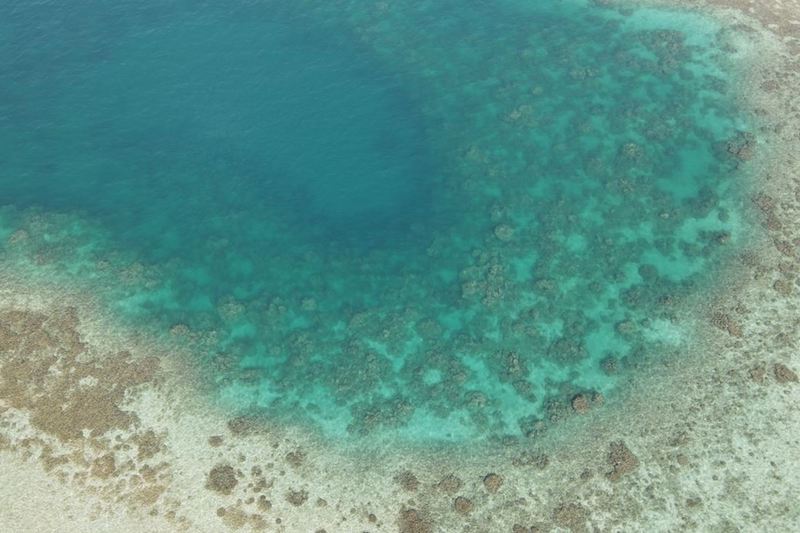A rare 'blue hole' discovered in Abu Dhabi
The hole was discovered in a local area code…
Immediately reminiscent of the Great Blue Hole in Belize, this slightly smaller sea-framed sapphire popped up on the Environment Agency – Abu Dhabi’s (EAD) radar during routine surveys, and has been given the name, Al Dhafra Blue Hole.
At 12 metres in depth, its a drop in the ocean (sorry) compared to its Latin American counterpart (125m deep), but it’s no mere blip — it’s 300 meters long and 200 metres wide and filled with a rich abundance of colourful marine life (including grouper, sweetlips, emperor fish and jackfish and at least 10 different coral species).
View this post on Instagram
You might also like
Marine features like these attract diving enthusiasts from around the world — the call of the void, swirling azure blues and kaleidoscopic collection of fish make them an irresistible pin in the map for the intrepid members of the scuba squad.
Other blue holes in different area codes
We’ve already name-dropped what is probably the most famous blue hole, in Belize — but the deepest discovered so far is The Yongle (which eerily sounds like it could also be the name of the creature living at the bottom of it) — in the South China Sea. It’s 300 metres deep, which means it could swallow the whole Address Downtown in one go. “Yum”, Yongle says, “more”.
Other popular blue hole diving adventures can be found at Gozo’s Blue Hole in Malta, the Blue Hole at Dabahb in Egypt and Dean’s Blue Hole in the Bahamas.
How do blue holes form?

The short answer is ‘erosion’ — blue holes are vertical caverns or sinkholes, usually in relatively shallow water with a bedrock of limestone or coral. Many of the larger ones were believed to be formed during previous ice age, when the sea levels were lower, and the limestone was exposed to the same weather-based erosion that forms caves on land. Was this how the Al Dhafra Blue Hole was formed? Unsure, but it’s entirely possible.
Images: Environment Agency – Abu Dhabi
